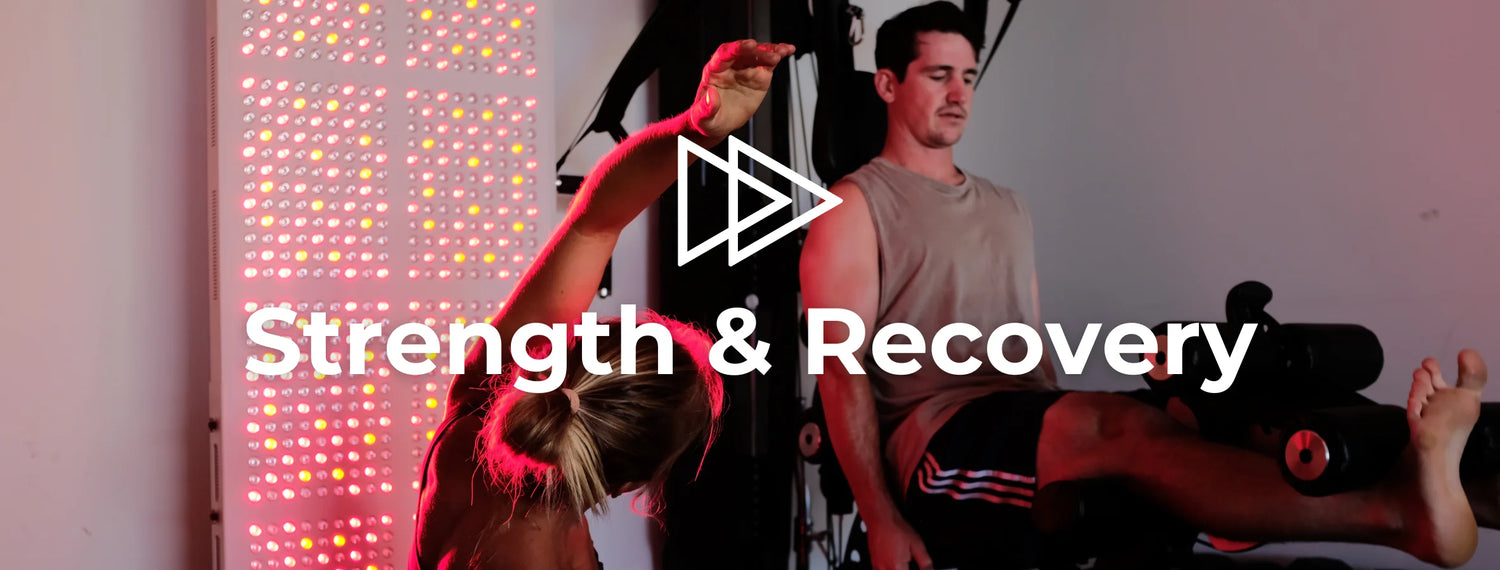Cellular Energy Production
By stimulating cellular energy production, including the key metabolic process known as the Krebs cycle, red light therapy enhances adenosine triphosphate (ATP) synthesis, the primary source of energy for cells. Furthermore, red light therapy influences cellular activities beyond energy production. It helps regulate radical oxygen species, reducing their levels and promoting a balanced cellular environment. Additionally, red light therapy has been shown to enhance the production of nitric oxide, a molecule crucial for vasodilation and improved blood flow. These effects on radical oxygen species and nitric oxide further contribute to enhanced cellular function, improved oxygenation, and nutrient delivery to muscles, ultimately supporting athletes in their training, performance, and recovery.
Unleash your athletic potential. Elevate performance, accelerate recovery, and enhance endurance. SOHL fuels strength, optimizes circulation, and boosts ATP production. Empower your journey to greatness.
Frequesntly Asked Questions
How often should athletes use red light therapy?
The frequency of red light therapy sessions can vary depending on individual needs and goals. However, many athletes find benefits with regular sessions, ranging from a few times per week to daily use, especially during periods of intense training or recovery.
Refer to the "Dosage Guidelines" section of this website.
How is red light therapy different from using an infrared sauna?
Both red light therapy and infrared saunas can support muscle recovery, but they do so through different mechanisms. Red light therapy directly targets cellular activity to enhance energy production, reduce inflammation, and accelerate muscle repair. Infrared saunas primarily promote sweating and increased blood circulation, which can aid in muscle recovery indirectly.
How is red light therapy compared to ice baths?
Red light therapy and ice baths are two popular methods used by athletes for muscle recovery, but they differ in their approach and effects. Red light therapy stimulates cellular activity through specific wavelengths of light, promoting improved circulation, reduced inflammation, and enhanced tissue repair. Ice baths, on the other hand, involve immersing the body in cold water to constrict blood vessels and decrease inflammation.
While both methods can help with muscle recovery, they offer distinct benefits. Red light therapy works at the cellular level, supporting energy production and enhancing the body's natural healing processes. It can be a non-invasive and targeted approach to promote recovery without the discomfort associated with cold exposure. Ice baths, on the other hand, provide a more immediate reduction in inflammation and can help numb pain, but they may also temporarily decrease blood flow to the muscles.
Is red light therapy banned by sports administrators?
No, red light therapy is not banned by sport administrators. Red light therapy is a non-invasive, non-pharmacological treatment that utilizes specific wavelengths of light to promote various health benefits, including muscle recovery, improved circulation, and reduced inflammation. It does not involve the use of performance-enhancing drugs or substances that are prohibited in sports.
Subject Matter Experts say
SOHL red light therapy panels come in sizes for treating specific body areas, or full-body coverage.

- Regular price
-
$399.00 - Regular price
-
$0.00 - Sale price
-
$399.00
- Regular price
-
$799.00 - Regular price
-
- Sale price
-
$799.00
- Regular price
-
$1,299.00 - Regular price
-
- Sale price
-
$1,299.00
- Regular price
-
$1,999.00 - Regular price
-
- Sale price
-
$1,999.00
- Regular price
-
$2,699.00 - Regular price
-
- Sale price
-
$2,699.00
- Regular price
-
$4,999.00 - Regular price
-
- Sale price
-
$4,999.00










